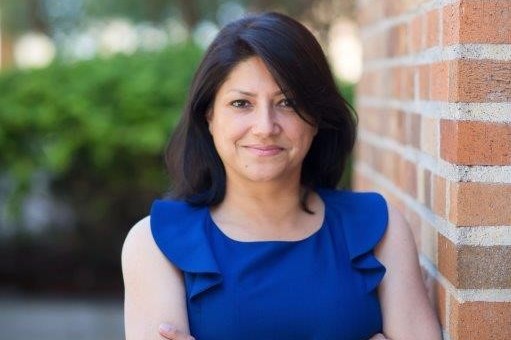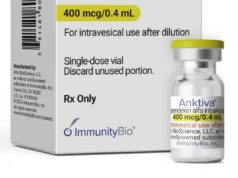
Dr. Sunita Mishra is a self-admitted, burned-out physician and longs for an era when the human relationship between doctor and patient is revived. So what better place to hope to transform care delivery than Amazon Care — the retail giant’s hybrid care arm? Amazon appears to be boldly taking a path less traveled by actually endeavoring to practice medicine, unlike Big Tech that has so far focused on leveraging technology to transform care.
“They talk about being customer-obsessed and to work back from the customer. It’s real,” said Mishra about Amazon’s business philosophy at the recently-concluded ViVE conference. “They know how to use technology and services so the last mile — it’s both technology but also services — and so I think they have a really good understanding of how both of those contribute to an amazing customer experience. And so for a healthcare provider, I thought Amazon was a good home for that because we actually know how to do both.”
There are not very many details she is willing to share, however, on how far along Amazon Care is in its quest to transform employer-sponsored primary care. Mishra won’t tell us how many clinicians make up the Care Medical team [a LinkedIn search shows that there are 58 employees on the professional networking group, including nurses, physicians and even a recruiter] and we don’t know how many self-insured employer customers the company has [beyond the trickle of names that have come out through news releases.]
Is Amazon Care using Epic or Cerner as its EHR system? Mishra provided a nebulous response.
“So we are using a combination of tools commercially available but also tools that we built and again it’s a starting point for us and we’re going into lean into whatever it is that will allow us to provide that bar-raising experience for patients,” she said.
Only one thing is clear: Care Medical wants to bring convenience and the same customer experience to primary care that consumers are used to while shopping on the Amazon site.
What is that experience? Amazon Care has started with delivering care to self-insured customers so employees of companies who have signed up to use the service can download the app, answer a few questions and and be connected to a provider within minutes, if necessary.
“We are so easy. Just push a button, answer two questions [on the app] and it’s to the care you need or the advice you need,” Mishra declared. “And I think the challenge is that it needs to be easy. And I think for a company that thinks about working back from the customer we’ve actually been able to put a lot of attention to that and the time and way to seconds and minutes is what we shoot for.”
But will this approach prove undue burden on physicians? After all, Amazon warehouse workers have been known to pay a heavy price for inhuman working conditions to satisfy the insatiable appetite of the American consumer during the pandemic. Will any good physicians want to join Care Medical knowing the corporate philosophy that drives speed and convenience?
“I was a burned-out primary care doctor many years ago and it is like my life’s mission is to create a system of care where we do not burn out another generation of physicians and nurses and nurse practitioners and whatever other roles that we are going to be adding to our team,” Mishra said.
Specifically, she said she is looking carefully at schedules and how best to create meaningful connections between clinicians and patients.
“You cannot provide good healthcare if you are emptying the soul of your physicians. It’s an area that I pay a lot of attention to. Clinician engagement is like my No. 2 priority and I’ve actually set a bar equivalent to patient experience for myself to make sure that we are making sure that we are creating an excellent clinician experience so that we can provide care that’s meaningful because if you are running on empty you can’t give that empathy and give that human aspect to care,” she declared.
Still, the goal is not to keep the patient waiting on screens or in other appointments and that should help to drive up use of the Amazon Care service. But Mishra won’t disclose how many patient interactions — both hybrid and in-person — Care Medical has conducted.
What she will reveal is that the company is going after people that haven’t necessarily had a dedicated primary care physician they have seen annually.
“Our use case is really good for those people for whom time matters and it’s challenging to get care on their own terms. So that’s why I think our care is a bit different because we are really focusing on those that probably underutilize care to begin with,” she explained. “The customers that we want are the ones that actually never sought care because primary care is not convenient. It doesn’t fit into your life. I am a primary care doctor who for many years has not had a primary care doctor because when I call to get care they tell me, ‘I can fit you in at Wednesday at 2 pm,’ and I am like, ‘That doesn’t fit with my schedule.’”
The app can also determine whether care is even needed – often, answers that the user inputs can lead it offer advice that is sufficient and no telemedicine visit or in-person appointment is necessary.
“When they do need a provider, we are able to usually connect them to one in minutes. And if we need to do additional diagnostic care, we can send someone to their home or to their office,” Mishra said. “Before the pandemic, we used to secure office space to be able to offer care in a way that is convenient for you.”
The convenience factor and the ease of use is what Mishra hopes will increase access to care for those who have traditionally eschewed seeing doctor regularly
“So I think by having companies like Amazon to join [in delivering care] to try to think about making access available at scale it is I think good for everyone because if we are all thinking about the customer, more access is better…” Mishra said.
While expanding access may be a good thing, Amazon is taking a stab at the employer-sponsored population that is largely healthier and younger than the older, chronic disease patients responsible for the lion’s share of healthcare costs. Separately, if impact and expanding access to care is what Amazon is after, why not try rural healthcare that was on thin ice as it is with thin hospital margins and made worse by the crisis that is Covid-19.
“Well when we started, it started off as an idea to serve employees at Amazon better. And so that was our starting point,” Mishra countered. “You have to start somewhere and I think the learnings that we have had in the space that we are in are going to allow us to continue to hear what customers are looking for regardless of what sector they are in and hopefully we will be able to serve those folks as well but we had to start somewhere.”
Photo: Amazon Care
Editor’s Note: MedCity News is a partner of HLTH, the organizer of the ViVE conference.








